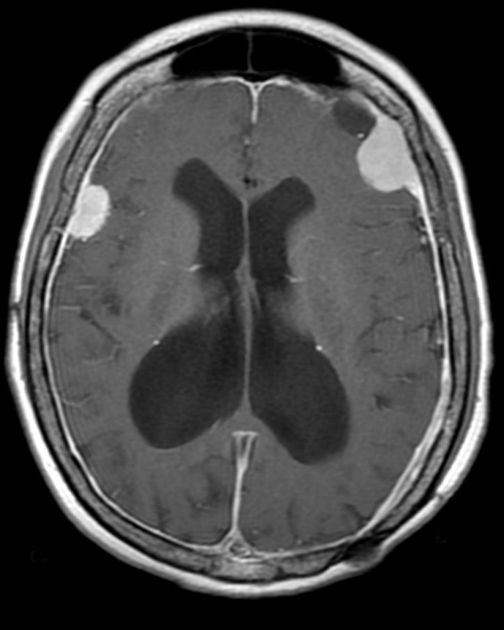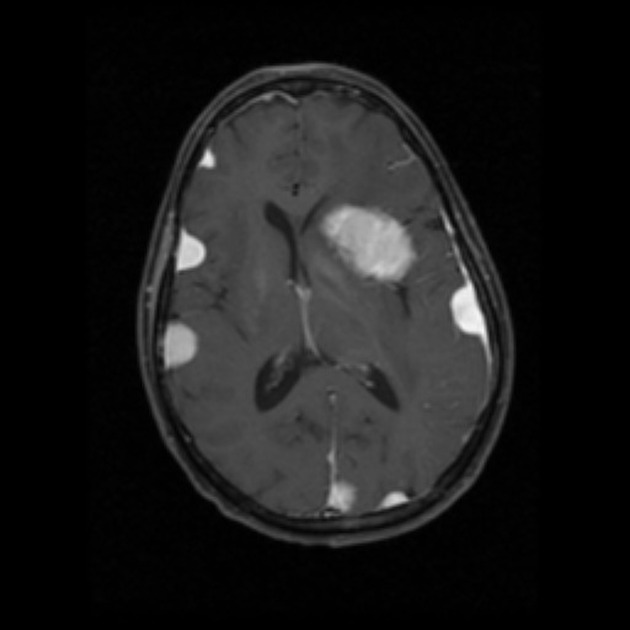Radiation-induced meningiomas are more frequently multiple and have a very long latency period. Meningiomas are a much more frequent complication of radiation exposure compared to sarcomas or gliomas.
Epidemiology
The exact incidence of radiation-induced meningiomas is unknown; one study had an incidence of 22% 1. There is an increasing incidence of developing meningiomas over time, unlike radiation-induced gliomas that have a stable/decreased incidence 5 years post-treatment 1. Radiation-induced meningiomas tend to occur in younger patients when compared to spontaneous meningiomas 3.
Pathology
There is a long latency between radiation exposure and diagnosis of radiation-induced meningiomas, on average ~35 years. They are more likely to be multiple, more aggressive, and have higher rates of recurrence than spontaneous meningiomas 2.
Etiology
Increased incidence of meningiomas has been documented in populations with radiation exposure that has come from therapeutic, diagnostic and environmental exposures 1,2:
- whole brain radiotherapy for childhood leukemia
- radiotherapy for tinea capitis
- whole mouth dental radiographs (increased risk in examinations performed pre-1945 when doses were higher)
- survivors of the Hiroshima and Nagasaki atomic bombings









 Unable to process the form. Check for errors and try again.
Unable to process the form. Check for errors and try again.